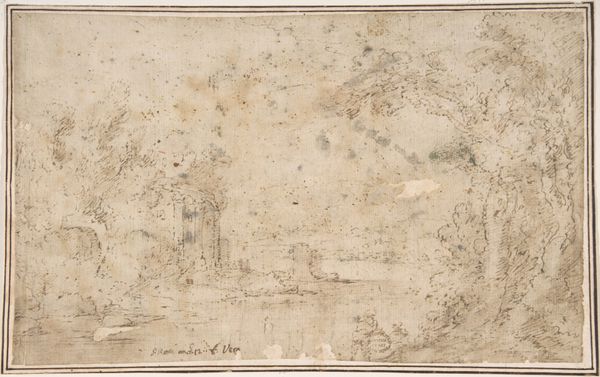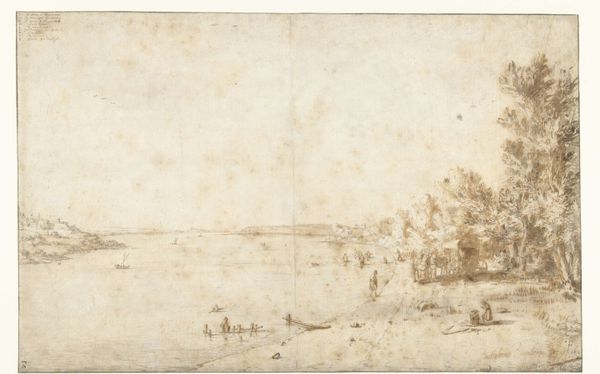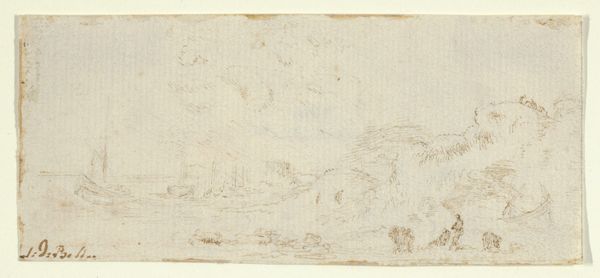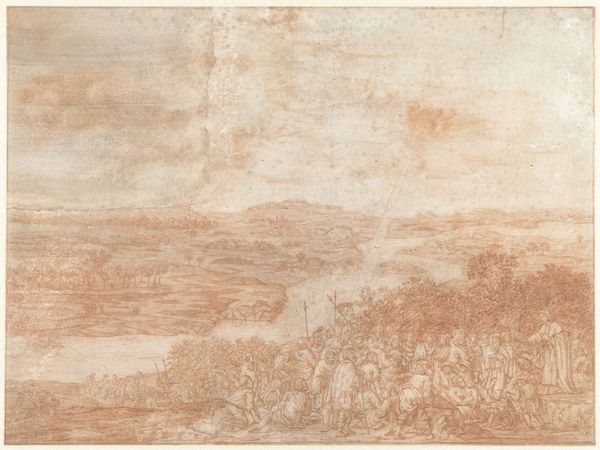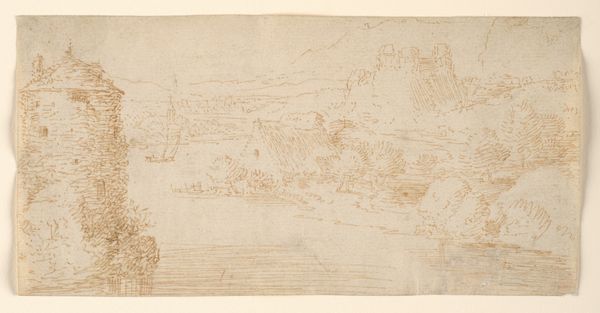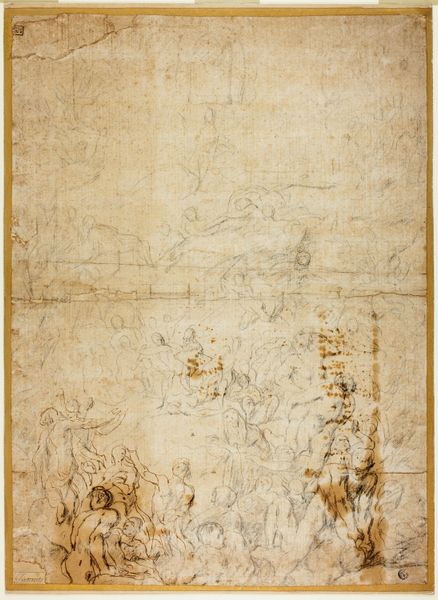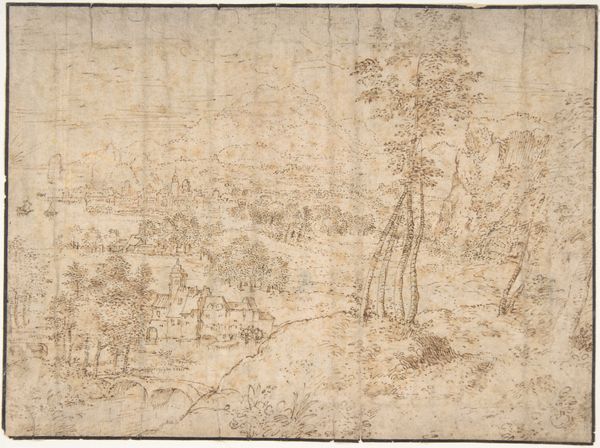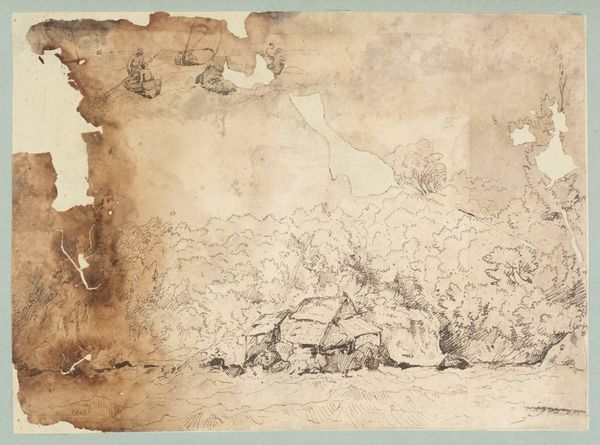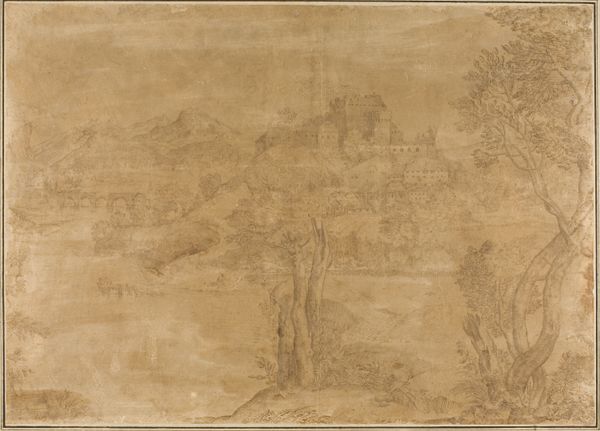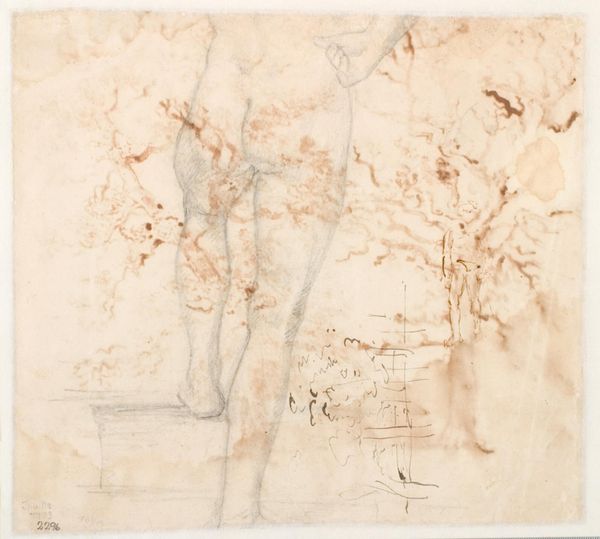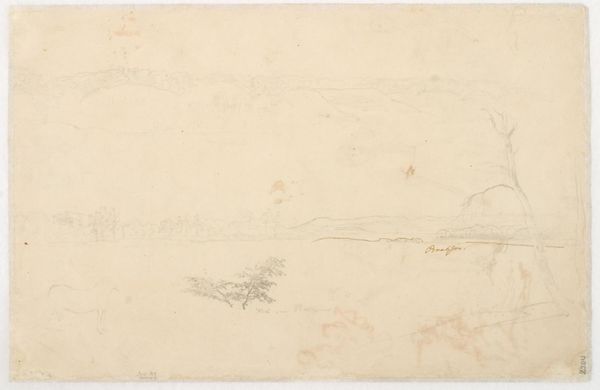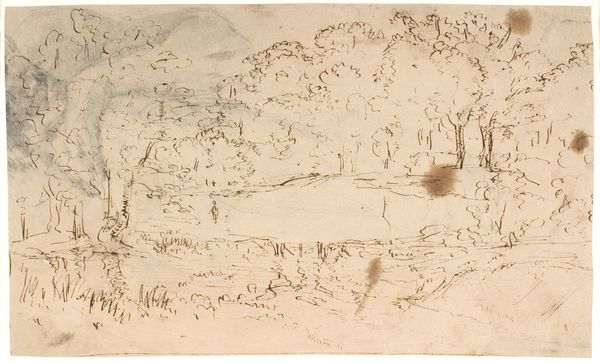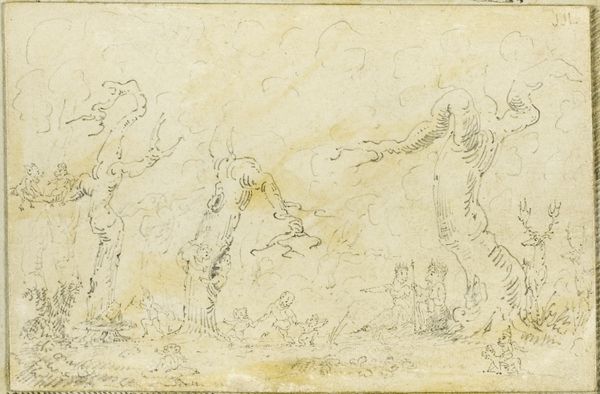
A Hillside Landscape Sketch with Figures and Buildings c. 1585 - 1587
0:00
0:00
drawing, paper, ink
#
drawing
#
water colours
#
landscape
#
mannerism
#
figuration
#
paper
#
ink
#
genre-painting
Dimensions: height 286 mm, width 425 mm
Copyright: Rijks Museum: Open Domain
Editor: This is Annibale Carracci's "A Hillside Landscape Sketch with Figures and Buildings," created around 1585 to 1587 using ink and watercolors on paper. It feels almost like a fleeting impression of a place, very light and airy. What draws your eye when you look at it? Curator: I am interested in the labor involved in its creation and how the ready availability of paper and ink, even in the 16th century, facilitated such sketches. How was this paper produced? Where did Carracci obtain his inks and pigments? It isn't simply an idealized scene, but rather it hints at the infrastructures of artistic production available at this time. Editor: That's a perspective I hadn't considered. I was focused on the picturesque quality of the landscape itself, those tiny figures within. So, you're thinking about the larger economic system that allows for art like this to even be made? Curator: Precisely. What societal conditions had to exist? Who was purchasing paper, ink, and artwork like this, and how did those choices further enable artistic production? Understanding these contexts really shifts how we understand the image. Editor: It changes it from just a pretty picture to a document of its time, tied to the economy and industry of art-making. Did the rise of paper manufacturing influence the shift from, say, fresco painting, to smaller, more transportable works like this? Curator: Absolutely! The increased availability and relative affordability of materials impacted the scale and nature of art being produced. Consumption and production are intrinsically linked. These rough landscape sketches can reveal more about the material world of the 16th century than any polished history painting could. Editor: That's given me so much to think about, looking beyond the subject matter to the actual 'stuff' of art. Curator: It certainly reframes our appreciation. A beautiful sketch is lovely, but understanding its material conditions roots it firmly in its moment in history.
Comments
No comments
Be the first to comment and join the conversation on the ultimate creative platform.
